World record for data transfer speeds broken
Labels: Internet , Technology
$99, MIPS-powered tablet ships with Android 4.0 -Ainovo Novo7
Ainol's Ainovo-branded Novo7 tablet was announced by MIPS Technologies and its system on chip (SoC) partner in China, Ingenic Semiconductor. Now available in China for under $100, the tablet will be available in the U.S. and other markets "within the next several months" under brands from companies including Leader International and OMG Electronics, say the partners. Eight- and nine-inch versions are also said to be under development.

Ainovo Novo7

Novo7 from another angle
 Ingenic's JZ4770 (pictured) is the latest in a line of MIPS-architecture "Xburst" processors, which appeared in early versions of the low-cost Velocity Cruz Android tablets before the company switched to a Cortex-A8 processor in its latest Velocity Micro Cruz T408 and Cruz T410.
Ingenic's JZ4770 (pictured) is the latest in a line of MIPS-architecture "Xburst" processors, which appeared in early versions of the low-cost Velocity Cruz Android tablets before the company switched to a Cortex-A8 processor in its latest Velocity Micro Cruz T408 and Cruz T410. In January of this year, MIPS announced that China-based Ingenic had begun formally licensing the MIPS32 architecture for its mobile device SoCs. Ingenics has been building MIPS-derived Xburst cores for years, but up until a year ago, hasn't paid any fees. Some 30 million XBurst CPUs have been shipped to date, says the company.
Ingenic's JZ4770 [translated product page] SoC uses the "Xburst1" architecture based on a MIPS32 R2 core clocked at 1GHz. The 65-nanometer fabricated processor core offers 2.5 DMIPS performance, and consumes less than 90mW of power at full speed with L1 cache, claims the company. Equipped with 16KB each of instruction and data cache, the Xburst1 is said to supply Ingenics' own SIMD instruction set atop the MIPS architecture.
The Xburst1 spec will move to a 40nm fabricated version that clocks at up to 1.5GHz, and in 2012, Ingenic's Xburst2 processor line is due to begin sampling, featuring 64-bit, dual-issue, dual-thread MIPS technology.
The JZ4770 SoC pairs the 1GHz Xburst processor core with a 444MHz Vivante GC860 3D graphics processing unit (GPU), offering support for OpenGL ES 2.0 and OpenVG 1.1, according to MIPS and Ingenic. The JZ4770 SoC also integrates a 1080p video processing engine capable of decoding 10-bit X.264 video for 1080p playback, say the partners. In addition, there are said to be various on-chip analog and application blocks on the SoC including audio codecs and GPS.
The entire SoC is said to consume about 250mW operating under full load. As a result, the tablet draws less than 400mA during active web browsing, claim the partners. That translates into a claimed battery life of six hours of game play, seven hours of web browsing, eight hours for video, 25 hours for music, and 30 hours on standby.
No memory or storage details were offered on the Novo7 except that a microSD slot is available. In addition, the tablet is said to supports Microsoft's exFAT storage format, which can store files of over 4GB each. The seven-inch, display uses capacitive multitouch technology, but no resolution details were supplied.

Novo7's dual cameras
(Click to enlarge)
MIPS on Android background
MIPS helped support a port of Android to the MIPS architecture, a task that was completed in June 2009, based on Embedded Alley's initial Android to MIPS port. (Embedded Alley was since acquired by Mentor Graphics.)
MIPS has been running with the Android theme ever since. At CES 2010, MIPS demonstrated numerous Android-based IPTV STBs and related products -- primarily using Sigma Designs processors. At CES 2011, MIPS showed off a Chinese-made Android smartphone design branded with the Sanno name. The company also announced new "SmartCE" TV set-top platform based on Android.
Stated Andy Rubin, senior vice president of mobile at Google, "I'm thrilled to see the entrance of MIPS-Based Android 4.0 tablets into the market. Low cost, high performance tablets are a big win for mobile consumers."
Stated Qiang Liu, chairman and CEO, Ingenic Semiconductor, "We are pleased to join with MIPS to announce these breakthrough high-performance, low-power, low-cost Android 4.0 tablets."
Stated Sandeep Vij, president and CEO, MIPS Technologies, "We applaud Ingenic's accomplishment in developing this new high-performance, feature-rich Android 4.0 tablet, and offering it at a price point that makes it widely accessible."
Availability
The Ainovo Novo7 is now available with Android 4.0 in China and online through Ainol Electronics at its Ainovo product page for $99 (U.S.) non-subsidized, according to Ainol. The product is said to be 30 percent off the regular price, and U.S. orders also require $60 in shipping and handling. The tablet will be available in other geographies within the next several months, say the partners.
Labels: Computers , Mobile , Technology
3-D Projection Tech Makes Images Hover in Mid-Air, No Screen Necessary

Labels: Innovations , Technology
How-to: use Google Music from anywhere (yes, outside of the United States)
 |
| www.hackerplus.in |
Transparent Tablet Computer Makes Reality More Appealing
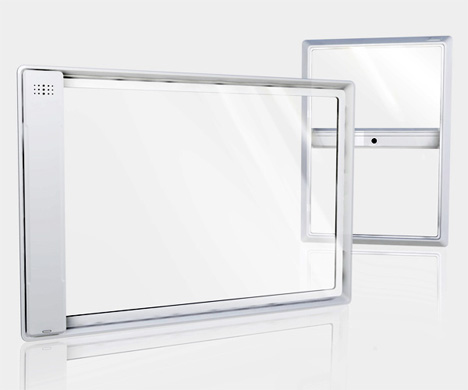
Tablet computers are definitely the wave of the future, and I am pretty sure we’ll see them evolve quickly over the next several years. This concept tablet PC is a gorgeous rendering of what might be possible in the future of the tablet.
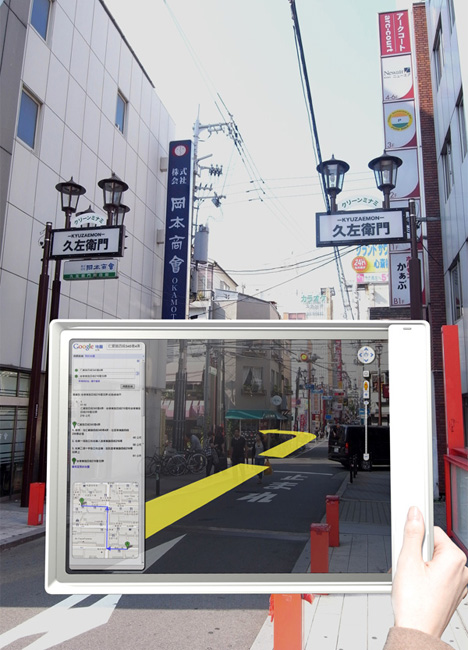
The Iris Tablet PC is the work of designers Liu-Wei, Yao Kai-Chi, Hong Ruei-Hong & Cheng Ya-Fang. With a transparent body and OLED screen, the Iris is more a tool of augmented reality than a true tablet computer.
Labels: Computers , Innovations , Technology
Nokia Kinetic concept phone with flexible display
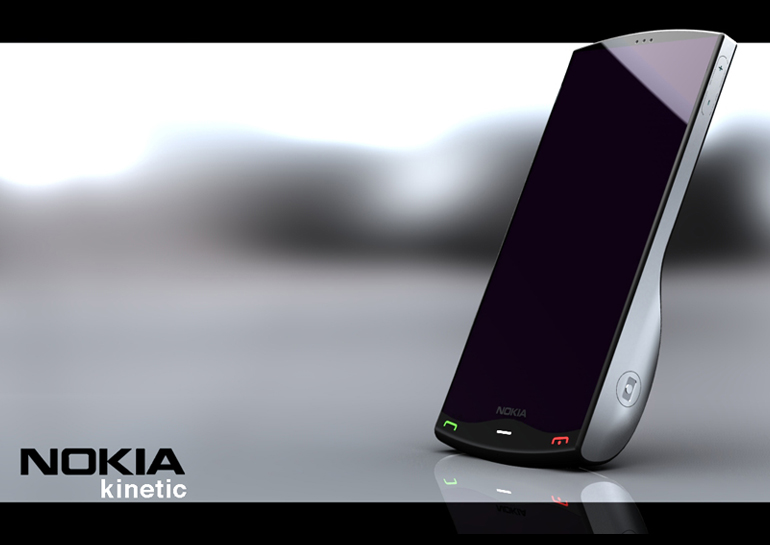
Here’s a concept device from Nokia called the Kinetic. You use it by bending and twisting. It is not a touchscreen. Nokia Kinetic is a landscape device with two working applications, Music and Pictures.The Nokia Kinetic by Nokia Research division works by bending and twisting the device in each corner in order to register input.For example bending in the device towards you will open the application This new technology is very beneficial for those who live in cold environments because gloves don’t work well with touchscreens. Nokia Kinetic device feels like a step into the future, with a real OLED display Unfortunately, CNET reports that its strictly in the prototype phase, and may never become an actual product that’s for sale

Labels: Computers , Innovations , Mobile , Technology
Plasma antennas
The different states of matter generally found on earth are solid, liquid and gas. Sir William Crookes, an English physicist, identified a fourth state of matter, now called plasma, in 1879. Plasma is by far the most common form of matter. Plasma in the stars and in the tenuous space between them makes up over 99 per cent of the visible universe and perhaps most of what is not visible. Important to antenna technology, plasmas are conductive assemblies of charged and neutral particles and fields that exhibit collective effects. Plasmas carry electrical currents and generate magnetic fields. A plasma antenna is a type of antenna in which the metal-conducting elements of a conventional antenna are replaced by plasma. These are radio frequency antennas that employ plasma as the guiding medium for electromagnetic radiation. The plasma antennas are essentially a cluster of thousands of diodes on a silicon chip that produces a tiny cloud of electrons when charged. These tiny, dense clouds can reflect high-frequency waves like mirrors, focusing the beams by selectively activating particular diodes. The ‘beam-forming’ capability could allow ultra-fast transmission of high data loads—like those needed to seamlessly stream a TV show to an untethered tablet—creating an attractive option for the next generation of supercharged wireless transmitters. Many types of plasma antennas can be constructed, including dipole, loop and reflector antennas. Plasma antennas are interpreted as various devices in which plasma with electric conductivity serves as an emitting element. In gas plasma antenna the concept is to use plasma discharge tubes as the antenna elements. When the tubes are energised, these turn into conductors, and can transmit and receive radio signals. When de-energised, these revert to non-conducting elements and do not reflect probing radio signals. The fact that the emitting element is formed over the interval needed for the emission of an electromagnetic pulse is an important advantage of plasma antennas. In the passive state (in the absence of plasma in the discharge tube), such a device does not exhibit electric conductivity. A plasma stream flowing from a jet into the ambient space, the plasma trace of a body moving at an ultrasonic velocity in the atmosphere, and alternative plasma objects have been studied as possible antenna elements. Solid-state plasma antenna uses beamforming technology and the same manufacturing process that is currently used for silicon chips. That makes it small enough to fit into smartphones. Higher frequencies mean shorter wavelengths and hence smaller antennas...............
Labels: Innovations , Technology
Anonymous Surfing-Hide your real IP-Ultra surf
Ultra surf is a small free tool/utility that help you to bypass the firewall/gateway/router restriction imposed by your ISP,at your workplace,schools or colleges. It also help to stay anonymous by hiding your real IP.
How to create Proxy chain | proxy chaining tutorial
By using proxy server you can hide your real IP over the internet while surfing.
User---------->[proxy]----------->[website]
the website will get the IP of the proxy not yours.
Proxy Chaining: Proxy chaining is the use of more than 1 proxy servers to stay anonymous. You can use as many proxy servers as you can or want. The more you have, the more anonymous you will be. This can be shown like this..
User---------->[proxy1]---------->[proxy2]---------->[proxy3]---------->.......---------->[proxyN]---------->[website]
the user first connect to Proxy1. After connecting to Proxy1, Now the user will connect to Proxy2, then, the user will connect to Proxy3, then the user will connect to Proxy4, and thus using N proxies, the user will then connect to website he want to use.
You can use as many proxies u want but you can never be 100% anonymous.
How to create proxy chaining
Nokia's Android flirtations revealed

Labels: Mobile
Blogger Sitemap Generator Guide- Increases Your Traffic
The following are the way to use Blogger Sitemap Generator :
- Please visit http://digitalinspiration.com/tools/blogger/sitemap/index.php
- Enter your blog address into the empty field available, do not forget to write your complete blog address including the http:// and ends with / (slash) (e.g. http://www.blogspottutorial.com/ ), and then click the Create Blogger Sitemap button.
About HTML5?
So What’s New in HTML 5?
Labels: Computers , Guides , Innovations , Internet , Technology
Google secrets - Some Cool Gooooogle
put this string in google search:
www.google.com
"parent directory " /appz/ -xxx -html -htm -php -shtml -opendivx -md5 -md5sumsNotice that i am only changing the word after the parent directory, change it to what you want and you will get a lot of stuff.
"parent directory " DVDRip -xxx -html -htm -php -shtml -opendivx -md5 -md5sums
"parent directory "Xvid -xxx -html -htm -php -shtml -opendivx -md5 -md5sums
"parent directory " Gamez -xxx -html -htm -php -shtml -opendivx -md5 -md5sums
"parent directory " MP3 -xxx -ht
ml -htm -php -shtml -opendivx -md5 -md5sums
"parent directory " Name of Singer or album -xxx -html -htm -php -shtml -opendivx -md5 -md5sums
voila!
Method 2
put this string in google search:
www.google.com
?intitle:index.of? mp3You only need add the name of the song/artist/singer.
Example: ?intitle:index.of? mp3 jackson
Labels: Computers , How-To , TipsTricks
Acoustic diode allows sound waves to only travel in one direction

When it comes to the sound-proofing of buildings, most people likely think of using materials that simply absorb the sound waves in a noisy room, so they can't proceed into a neighboring quiet room. Researchers at the California Institute of Technology (Caltech), however, are taking a different approach. They have created something known as an acoustic diode, that only allows sound traveling through it to go in one direction. If incorporated into building materials, such diodes would let sound travel from the quiet room to the noisy one, but would simply block noise transmission in the opposite direction.
The acoustic diode works much like a traditional electrical diode, which lets electrical currents pass in one direction, but keeps them from traveling back. In this case, sound waves are taking the place of electrical currents.
Labels: Computers , Innovations , Technology
Solution to Battery plugged in but not charging
Today As usual I was using my laptop when I saw something typical happening with Battery status. Even though the power was plugged in, it showed ” plugged in, not charging“.
So I started doing a bit of googling on the web and finally found the solution here.
- Turn off laptop.
- Unplug AC power.
- Remove battery.
- Replace AC power.
- Turn on laptop, allow OS to boot.
- Once logged in to the machine, perform a normal shut down.
- Unplug AC power.
- Replace battery.
- Replace AC power.
- Turn on laptop, allow OS to boot. The battery should once again be charging as normal.
Researchers create hydrogen from ethanol using solar energy

Hydrogen is the most abundant element in the universe and its presence on our planet isnt limited. However, one problem with hydrogen is that it is not found in its pure form on the earth, which means that it has to be extracted from sources such as methane and water, both of which require a lot of energy. A team of researchers at Spains Universitat Politcnica de Catalunya, Scotlands University of Aberdeen and New Zealands University of Auckland have now created a process, using which hydrogen can be produced from renewable ethanol using sunlight.......
Labels: Clean Energy , Innovations , Technology
Green Transformer – Solar-powered algae refinery floats on water




Labels: Clean Energy , Innovations , Technology
Finally Nokia N9 shows up in China

When guys from the NegriElectronics leaked a Nokia device back in June, it appeared to be the N8 with an additional tilting QWERTY slider however, this previously unknown Nokia slider is actually the widely rumored N9. The new round of reports has convinced the guys at Engadget and they have decided to bring the scandal to an end. While the featured image does not match the prototype, built in Finland, that features an entirely metallic construction with keyboard buttons, USB cover, and a few trappings in plastic.
Check out more images after the jump:




Labels: Computers , Mobile , Technology
Login With Multiple Accounts Within One Browser
For example, if you have multiple Gmail accounts, you can open them all at the same time. Each Firefox window, managed by Multifox, accesses an account without interfering each other. Just follow below step to get Multifox Addon on your Firefox.
1.Go to http://br.mozdev.org/multifox/
And click on Install (Install for your Firefox Ver 3.6 or 4)

2.It may give you a pop up to allow it. Just click allow and you will see a install window like below. Click On Install.


3.After Installing you will be asked to Restart your Firefox. Just save your work and Restart.
4. After restarting your browser you can right click on Tab menu and then select Open in a new Identity profile
How To Prevent From Hackers
How to Protect from Hacking or atleast avoid it?
1. Download Panda USB Vaccine which disable the Autorun.inf File.By Autorun.inf file,Any Program can executed when a new USB Device is Plugged in.For Download Go to-http://www.pandasecurity.com/homeusers/downloads/usbvaccine/
2. Intall a Good Firewall as it protect the unauthorized access of Internet by Hacker,Keylogger.I suggest you to install Zone Alarm.Download It from-http://www.zonealarm.com/security/en-us/anti-virus-spyware-free-download.htm
3. If file is Suspicious,Then run it in sand boxie.Sandboxie runs your programs in an isolated space ,which prevents them from making permanent changes to other programs by Virus,Program and data in your computer.You can also run Virus in SandBoxie which does not harm your computer.Download It from
here- http://www.sandboxie.com/index.php?DownloadSandboxie.
4.Antiloggers are programs which are specially used for detecting the presence of keylogger, One of the popular antilogger is a zemana antilogger which claims to detect almost any keylogger .Download
It from here- http://www.zemana.com/download.aspx
5. If someone installed stealth FUD Keylogger,then it is very hard to Detect it.So install Key Scrambler.Using advanced encryption algorithms, KeyScrambler encrypts your keystrokes deep in the kernel, as soon as they enter the computer.When the encrypted keystrokes finally arrive at the intended application, the decryption component of KeyScrambler goes to work, and you see exactly the keys you've typed.Download It from here-
http://www.qfxsoftware.com/download.htm
6. Install a Good Spyware as it protect your computer against spyware threats.Spyware cease is one of my most favorite antispywares. The reason why I like is that it has a very user-friendly interface and it can protect your computer against 99% spyware threats. So if you are looking for a good antispyware software I recommend Spyware cease.Download It form
here- http://www.spywarecease.com/download.php
7. Install a Antivirus.I recommended You use Kaspersky and Norton.
8. Try to Turn off Javascript.
9. Never Download file from Hacking,Warez sites because file is binded with Keylogger,Virus.
10. If you Want more than Sandboxie,Then use Virtual Machine Software.It creates a temporary new operating in which you can do anything.You can compare Sandboxe and Virtual Machines to Proxy and VPN.
11. Never Use Proxy because some proxies store your Username,Password.Always use Good Free VPN. Some
of Good VPN are
a.http://www.cyberghostvpn.com/files/download.php
b.http://www.macrovpn.com/
c.https://www.ultravpn.fr/
12. Always use Logout in any website,Forum instead of directly closing the Website.
13. Don't Click on Malcious link as it can copy Cookies,Intsall RAT by using Java applet.
14. Install Deep Freeze.Faronics Deep Freeze makes computer configurations indestructible and prevents against unwanted workstation changes—regardless of whether they are accidental or malicious.Download It from here-http://www.faronics.com/en/DownloadEvaluationEditions.aspx
15. There Is no Program/Software which hack Gmail,Facebbok,Twiiter,Yahoo etc. Account.Don't Believe on them.
16. If File is small,Do online Virus Checking at
a.http://novirusthanks.org
b. http://onlinescan.avast.com/
c. http://www.virustotal.com/
17. Don't Use Public Wi-Fi Hotspot.Connect it through VPN.
Note: Although I tried to keep it up to date but there may be a better option available. So don't forget to google.
Mini Machine Brings 3D Printing Home
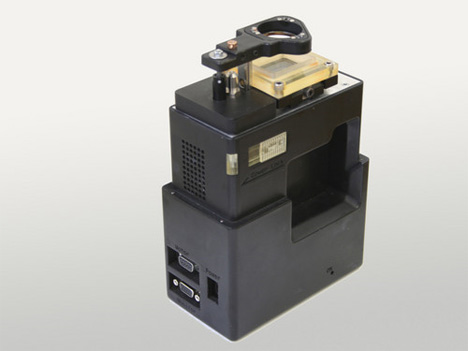
Three-dimensional printers are among the coolest futuristic technology already in use today, but they can be prohibitively expensive and very large. For those unfamiliar with the process of 3D printing, it involves a machine that lays down one layer of synthetic resin at a time while an intense beam of light hardens each layer in turn. The process allows precise shapes to be formed without casting or the need for large manufacturing setups. A team of Viennese researchers have come up with an additive manufacturing printer that is so small and affordable it could actually make the act of printing things we need an everyday action in ordinary homes
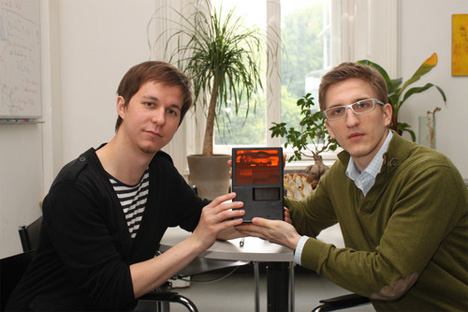
The machine is no bigger than a milk carton and weighs around three pounds, which is a huge reduction from the fridge-sized machines of 3D printing’s early years. At a cost of just €1200 (around $1700), it is remarkably affordable as well. The biggest advantage of 3D printers is that they can produce objects on demand, making it possible to create difficult-to-obtain spare parts without hassle. They also make it simple to produce toys, jewelry or other objects that you dream up but have no way of putting into mass production. The team from Technische Universitat Wien says that they will continue to make the machine smaller and smaller – so one day you might be able to whip a 3D printer out of your pocket to make last-minute gifts on the way to a party
Labels: Computers , Innovations
World record 26 terabits per second data transmission achieved

With video content consuming ever more bandwidth, the need for faster data transmission rates has never been greater. Now a team of scientists at Germany's Karlsruhe Institute of Technology (KIT) are claiming a world record in data transmission with the successful encoding of data at a rate of 26 terabits per second on a single laser beam and transmitting it over a distance of 50 km (31 miles). The scientists claim this is the largest data volume ever transported on a laser beam and enables the transmission of 700 DVD's worth of content in just one second.
With no electronic processing methods available for a data rate of 26 terabits per second, the team developed a new opto-electric data decoding process. This process relies on purely optical calculations to break down the initial high data rate into smaller bit rates that can then be processed electrically. The record-breaking data encoding also employed the orthogonal frequency division multiplexing (OFDM) scheme based on Fast Fourier Transformation (FFT) mathematical routines that is commonly used in mobile communications networks including digital TV and audio broadcasts.
Because energy is required for the laser and a few process steps only, the team says the new method is not only extremely fast, but also very energy efficient.
"Our result shows that physical limits are not yet exceeded even at extremely high data rates," says Professor Jürg Leuthold, who led the KIT experiment. "A few years ago, data rates of 26 terabits per second were deemed utopian even for systems with many lasers and there would not have been any applications. With 26 terabits per second, it would have been possible to transmit up to 400 million telephone calls at the same time. Nobody needed this at that time. Today, the situation is different."
The latest breakthrough follows on from the previous high-speed data transmission record set by the KIT scientists in 2010, when they successfully exceeded the data rate of 10 terabits (or 10,000 billion bits) per second.
The KIT experiment involved companies and scientists from all over Europe, including members of the staff of Agilent and Micram Deutschland, Time-Bandwidth Switzerland, Finisar Israel, and the University of Southampton in Great Britain. The experiment is detailed in the journal Nature Photonics.
Labels: Computers , Innovations
Low-cost solar lanterns for poor students

With charging lights costing big bucks, poor students are still left out with two options—either to study under a kerosene lantern or go for a candle. Keeping in view such students, who study in dark, D. Light Company rolled out world’s cheapest lantern that runs with solar energy a few years ago and now it is been reported that the project has been successful. I feel so privileged to write a review about the product that is not aimed at deep pockets but brainy muffs. A special report!
Named S1, the solar lantern is very bright and can provide enough light so that your eyes don’t come under pressure while reading in dark. This solar lantern is available for less than eight USD. A day’s charging will enable the light to glow for about four hours. The solar. lantern has got an LED bulb. It is a a very small device that can be carried even in the pocket. Reportedly, this lantern has become a big hit in the Indian market with every single student among a group of 275 students switching to it. The survey by D. Light in India claimed that all the students, who used S1 have shown better results comparatively.
SI solar lantern, though aimed at students, anyone can go for it. It is undoubtedly a good product. Cheaper price element apart, one should always try to encourage such eco-friendly goods. However, there’s another product from the same company, which may be much more useful to others. S250, which also runs with solar energy is a two-in-one product. It acts as a lamp as well as mobile charger. I suggest you guys to switch to such eco-friendly products. Above all, eco-friendly goods are also pocket-friendly.
New 3D transistor design to speed up your PC
The transistors on computer chips — whether for PCs or smartphones — have been designed in essentially the same way since 1959 when Robert Noyce, Intel's co-founder, and Jack Kilby of Texas Instruments independently invented the first integrated circuits that became the basic building block of electronic devices in the information age.
These early transistors were built on a flat surface. But Intel is now building up. When the space between the billions of tiny electronic switches on the flat surface of a computer chip is measured in the width of just dozens of atoms, designers needed the third dimension to find more room.
The company has already begun making its microprocessors using a new 3D transistor design, called a Finfet (for fin field-effect transistor), which is based around a remarkably small pillar , or fin, of silicon that rises above the surface of the chip. Intel , based in Santa Clara, California , plans to enter general production based on the new technology some time later this year.
Although the company did not give technical details about its new process in its Wednesday announcement, it said that it expected to be able to make chips that run as much as 37% faster in low-voltage applications and it would be able to cut power consumption as much as 50%.
Intel currently uses a photolithographic process to make a chip, in which the smallest feature on the chip is just 32 nanometers, a level of microscopic manufacture that was reached in 2009. (By comparison a human red blood cell is 7,500 nanometers in width and a strand of DNA is 2.5 nanometers .) "Intel is on track for 22-nanometer manufacturing later this year," said Mark T Bohr, an Intel senior fellow and the scientist who has overseen the effort to develop the next generation of smaller transistors.
The company's engineers said that they now felt confident that they would be able to solve the challenges of making chips through at least the 10-nanometer generation, which is likely to happen in 2015.
Labels: Computers , Innovations
Make energy by your hands with portable self-charger

 Korean designer Seoung Won Shin reminding us of a beautiful creature "Dolphins" through his latest creation. He has developed a dolphin shaped portable self-charger that gives you energy anywhere, anytime.
Korean designer Seoung Won Shin reminding us of a beautiful creature "Dolphins" through his latest creation. He has developed a dolphin shaped portable self-charger that gives you energy anywhere, anytime.This innovative charger gives you green energy to juice up your gadgets like cell phones and MP3 players. All you have to do is repeatedly press the dolphin-like face of the charger to produce electrical charge, which powers gadgets via a USB post. The trendy power house comes in six different shades to suit your style. So, now make clean energy by your hands.

Labels: Clean Energy
Viewers of the Unseen
 Microscope power is restricted by diffraction limit—anything smaller than about half the wavelength of the illuminating light can’t be seen. A University of Michigan team created a lens with metallic resonators that focuses microwaves 10 times more than diffraction limit allows,its sound unbelievable buts its true .These lenses could be used to make smaller, faster computer chips.
Microscope power is restricted by diffraction limit—anything smaller than about half the wavelength of the illuminating light can’t be seen. A University of Michigan team created a lens with metallic resonators that focuses microwaves 10 times more than diffraction limit allows,its sound unbelievable buts its true .These lenses could be used to make smaller, faster computer chips.This is done using a new revolutionary material termed as "Metamaterial" the buzzword for today’s material scientist
Now what is it really??
These substances are tiny engineered structures from existing composite that are used to manipulate light, sound and radiowaves. Researchers are just starting to find applications for this research and may soon come out with products that can cloak military vehicles, make stronger microscopes and faster computer chips
New Water Cleaning Technology Could Lessen Environmental Impacts From Shale Production
A novel water cleaning technology currently being tested in field demonstrations could help significantly reduce potential environmental impacts from producing natural gas from theMarcellus shale and other geologic formations, according to the Department of Energy’s (DOE) National Energy Technology Laboratory (NETL).
ABSMaterial’s Osorb technology, which uses swelling glass to remove impurities, has been shown to clean flow back water and produced water from hydraulically fractured oil and gas wells. Produced waters are by far the largest volume byproduct associated with oil and gas exploration and production. Approximately 21 billion barrels of produced water, containing a wide variety of hydrocarbons and other chemicals, are generated each year in the United States from nearly one million wells.
NETL, the Office of Fossil Energy’s (FE) research laboratory, is addressing concerns about produced water by funding multiple projects to develop environmental tools and technologies, such as Osorb, that will improve management of water resources, water usage, and water treatment during oil and gas exploration and production.
Two pilot-scale Osorb-based water treatment systems have been built to date: a non-regenerating skid-mounted system which handles inputs of up to 4 gallons per minute, and a 60-gallon-per-minute trailer-mounted system that included a mechanism for Osorb regeneration. ABSMaterials has used these systems on numerous water samples including flow back water from theMarcellus, Woodford, and Haynesville shale formations and produced water from the Clinton and Bakken formations.
In independent testing, the skid-mounted system was found to remove more than 99 percent of oil and grease, more than 90 percent of dissolved BTEX (benzene, toluene, ethylbenzene, and xylenes), and significant amounts of production chemicals. Concurrent testing was performed using the trailer-mounted 60-gallon-per-minute system on produced water streams. One major oil services company conducted a full pilot test in the field using produced water from the Clinton formation in Ohio in July 2010 and March 2011. These tests showed that total petroleum hydrocarbon levels were slashed from 227 milligrams per liter to 0.1 milligrams per liter.
The results of this project have led to commercial interest from several global energy companies and future collaborative efforts. ABSMaterials also plans to deploy a trailer-mounted, 72,000-gallons-per-day water purification system for field use in North America in mid 2011.
A number of existing treatment techniques separate dispersed oils from water, taking advantage of the density difference between oil and water. However, very few technologies effectively address dissolved hydrocarbons, slicking agents, and polymers that prevent flow-back water from being recycled or discharged.
Osorb, a hybrid organic-inorganic nano-engineered structure, is a breakthrough in hydrocarbon removal technology that rapidly swells up to eight times its dried volume upon exposure to non-polar liquids. The swelling process is completely reversible—with no loss in swelling behavior even after repeated use—when absorbed species are evaporated by heating the material.
The ABSMaterials project was funded through the federal government’s Small Business Innovation Research Program. It is the second project under FE’s Oil and Natural Gas Program to show significant success treating produced or flow-back water. Several other projects will be conducting demonstrations focusing on other water treatment technologies during the remainder of fiscal year 2011.
Taken From: http://www.epmag.com/Production/ProductionNews/2011/April/item81755.php
India to launch its solar powered Aerial Vehicles

Haier brings human-powered washing machine to IFA 2010

Hoping from one task to other ,to manage your daily schedule leaves you with very little time to keep yourself in good shape. What if there was something that could do your clothes while you hit the exercise bike? Well, the new human-powered washing machine by the Chinese electronics giant Haier promises just that. This pioneering machine includes an exercise bike that collects energy as you pedal into a lithium-ion battery, which is hard wired to the front loading machine.

Just 20 minutes of pedaling gives you one cold cycle wash without drawing power from the grid. Haier brings to your doorstep a healthy, electricity saving, money saving and green way to spotless clothing. This ingenious human-powered washing machine was recently seen at the IFA 2010. I am sure you can’t wait to see this innovative machine go beyond prototype stage







